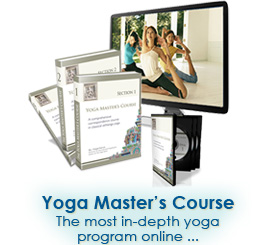[ Excerpt from The Science of Yoga, page 85 ]
Here's a brief introduction to the 8 limbs of yoga:
1. Yama
These can be thought of as the moral observances that are necessary for achieving a condition of deep harmony with other beings.
These fundamental 'laws of nature' have been discovered by those who have covered the evolutionary journey before us. Through their wisdom we can know the behaviours necessary for spiritual ascension.
They are the five ideals of: non-violence (in speech, deed, and thought); truth (integrity in both word and thought); non-stealing (or non-cheating); continence (involving self-restraint and moderation in all you do); and non-coveting (no envy, jealousy or unhealthy competitiveness).
Yama can be thought of as the restraint of the 'animal nature' (prakrithi), so that it does not become perverted (vikrithi), in order for one to become cultured or refined (samskrithi).
By evolving through the yamas, one becomes consciously able to intercept the automatic responses that we have to our everyday situations and events in life and learn to act in a more evolved way.
2. Niyama
If Yama is regarded as the don'ts, then Niyama can be seen as the do's. The Niyamas are the general directives or actions, the ethical observances contained within the rules of behaviour which are necessary for achieving a condition of deep balance within one's self.
The niyamas ask us to aim for: purity (inside and out); contentment (including optimism, a living in the moment, and thankfulness in prayer); ardour (warmth, devotion), discipline (and lack of excess); and, study of the Self (not being in denial, having accountability for one's own actions).
Niyama provides tools for the cultivation of certain higher qualities, a process which leads to the dissociation from that which is not the 'True Self'.
3. Asana
The word asana comes from the root asi, which means "to be". Asana literally means "a state of being."
Patanjali refers to asana as a steady, seated position that can be held with ease for long periods of time (i.e. for meditation). In ancient times, asana was the term for a physical seat (i.e., chair), and was used to refer to that special sitting place prepared for the guru (highest spiritual teacher), or someone of importance.
In hatha yoga, asanas are the physical poses or postures; a conscious holding of the body in a certain fixed position. Each asana affects the being on many different levels, from physical, energetic, and mental/emotional, to higher psychic connections via the respective mechanical, mental or esoteric aspects of each posture.
4. Pranayama
The word pranayama comes from the roots prana (Universal energy), and yama ("to hold/restrain"). In yoga, we use the breath as a primary tool for control and manipulation of this life-giving, universal energy.
Pranayama is, therefore, the practice of breath control as a conscious attempt to stabilize the flows of prana and apana (whose dynamic movements are intimately linked to the breath), and bring them into a state of polarity or harmonious interaction. Through pranayama one becomes aware of the universal subtle energy (prana).
5. Pratyahara
Pratyahara is the stage of withdrawal of the attention into oneself. It is the state of re-sorption into the Self of all the senses. Pratyahara is the interiorising into deeper practice in yoga and is the bridge between the antaranga (outer/physical - limbs 1 to 4) and the bahiranga (inner/subtle - limbs 6 to 8) practices of yoga.
6. Dharana
Dharana comes from the root dhar, which means to "bind together", "to make stable". It literally means "that which gives stability".
Dharana is the wilful act of concentration of the mind; the efforts of the jiva's (individual soul's) mind to remain focused on one point.
7. Dhyana
Dhyana is meditation, better described as "mystic absorption." In order to meditate, one must first have solid training in concentration (dharana). This is the reason why most beginners feel scattered, haphazard or ineffectual with attempts at meditation.
Meditation is a controlled expansion of the mind, or a state of prolonged concentration in which (in a precise moment, when concentration becomes 'frozen') there is revealed an enormous expansion of consciousness and access to the infinite.
A nice definition: dhyana (or meditation) is "the ability to concentrate more and more, on less and less (things)."
8. Samadhi
This is the stage where knowledge of the 'Essential Self' is attained. By knowledge, we are referring not to intellectual suppositions, but pure, ineffable "experience of the Sel."
Absolute knowledge occurs through the fusion between the ultimate essence of the microcosm of the individual being, and the infinite, absolute essence of the macrocosm of the Universe. Samadhi is the ultimate state of Self-realisation, an expansion of mind that surpasses all limits (it is meditation taken to perfection).
Samadhi is 'Super Consciousness' - complete absorption into the Absolute, Universal Consciousness. It is the complete forgetting of the 'small self' (jivatma) and mergence with the unchanging 'Higher Self' (paramatma).
[Continued...]
---------------------
NOTE: This yoga article is an excerpt from The Science of Yoga, an online yoga training program with streaming yoga videos and 600 pages of step-by-step yoga instruction.

"The Science of Yoga is a course worthy of
leather binding and an honored place in the
finest libraries in the world
... It is indeed a masterful work."
Dr. John Michael Christian
AwakeningWithYoga.com
Learn More About
The Science of Yoga Course
|






